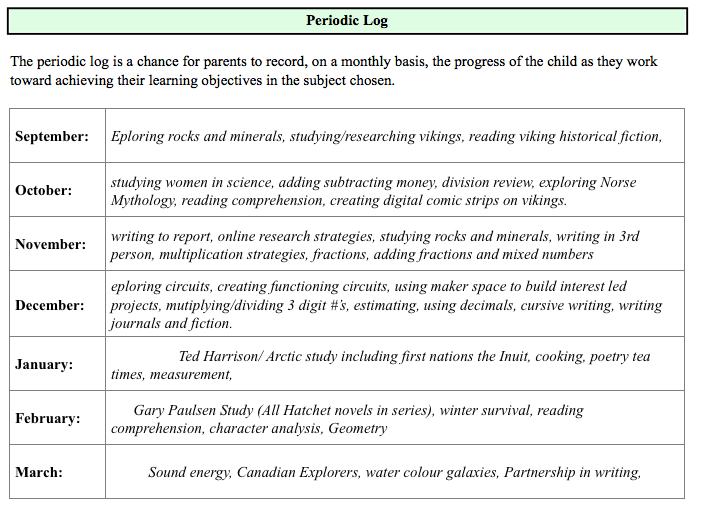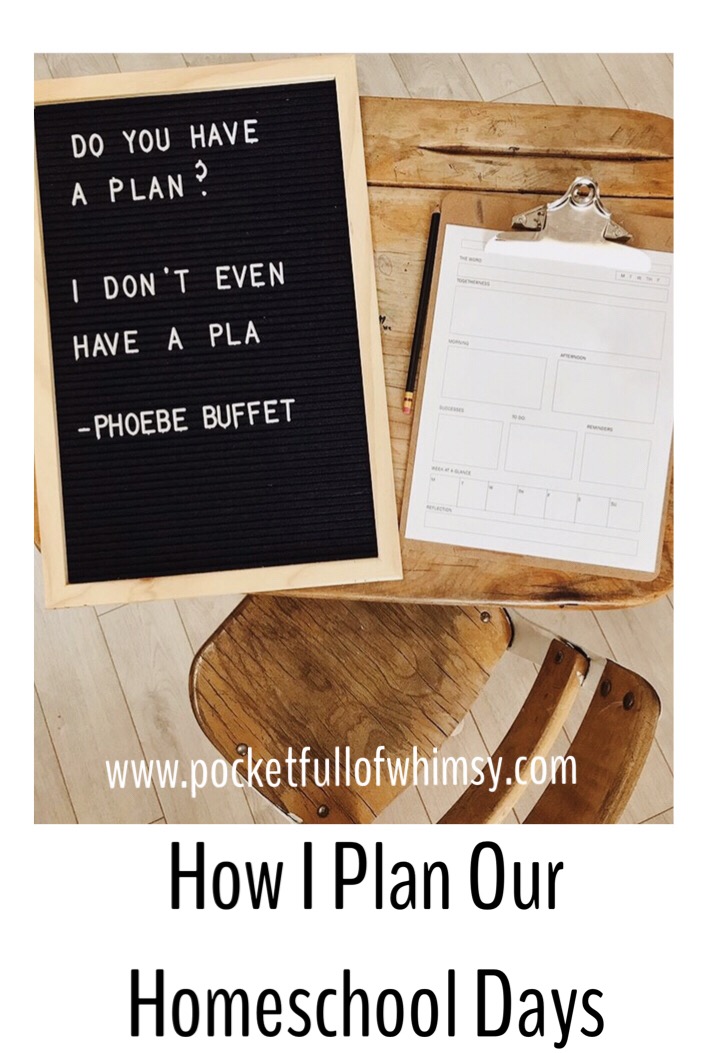Homeschool Logistics | Assessment and Reporting
In public school assessment is something we spend A LOT of time talking about. It's a big deal. Somehow we have to daily keep on top of 24 + kids, know where they are at, what they can do, what they're struggling with, figure out how to move them forward and report that to their parents and other teachers.
Homeschool by nature is very very different. We are removing the "middle people" so to speak and the end of the reporting chain is the one who is teaching and witnessing the child's learning daily. I do not need to give constant tests or quizzes to see what my child knows. I know what they know.
If I ever do perform the odd test I communicate to them that it is not about achieving a certain grade. That the goal of assessment is to be a tool to show us what you already know (and thus don't need to spend more time on) and what you still need to know (so what we will spend more time on). There really doesn't need to be any anxiety about assessment in a child - it's just a tool to help them.
The reporting process is also quite simple in Saskatchewan.
Here is an excerpt from the Home Based Education Policy Manual on the Annual Progress Report:
You can find the link to the whole publication HERE.
Home-based educators shall maintain a portfolio of work for each home-based learner on his/her program, regardless which of the options they choose for their annual student progress report (see p. 44).
• A portfolio of work indicates the home-based learner’s progress and consists of:
- a periodic log;
and, one of the following for each of the broad annual goals:
- a detailed summative record;
- sufficient samples of work; or,
- a summative record and samples of work.
• Home-based educators are not required to provide the portfolio of work to their registering official unless they have chosen this option for their annual progress report.
So let's break this down. You will have to maintain a portfolio of work for your child regardless of how you report. This could be a binder each year with examples of work from the beginning, middle and end of each year. It could include some of their favourite projects, examples of their writing and math.
Or it might be a massive filing cabinet in the basement with file folders packed with pretty much all of your work you weren't into sorting through just yet ;)
When submitting the Annual Progress Report to your division you will ALWAYS include a Period Log.
Your periodic log is essentially just a place to jot down a couple sentences about the things you did and worked on that month. Here is an example of one of mine. It does not include a lot of detail nor everything we did in the month but gives a feel for the broader range of what we were doing.
If you forget and find yourself a few months down the road trying to remember what you were doing that month I find going back to my daily planner helpful. Here is an example of a custom planner page that I created that fits my family and style well. I print off 20 double sided at a time and use them to create a quick picture of my days.
Even though I'm not married to my planner (I veer off my plan all of the time when inspiration hits or we choose to chase down a rabbit trail) it is super helpful to have a really simple record of our days. I added things like the successes and reflections to prompt even more intentional thinking about things I'm learning about my kids in the process.
As you can see the periodic log is really simple! Next up you have a choice of your additional piece of the progress report. You only need to supply ONE of either the sufficient examples of work OR a detailed summative record OR you can choose to send in both.
* there used to be a standardized test option. I haven't seen it on any recent forms or publications so maybe it's gone? If you know - message me and I'll update this.

Sufficient Examples of Work
For this option you will look at your 3 broad goals for each of the 4 core subjects and then pull examples of your child's work that address those goals. You'll also want to pull them from likely the beginning, middle and end of your year to show your child's growth.
My first year homeschooling this is the option I chose and I went all out. I selected all of my examples and because I didn't want to lose those originals I scanned in all of my examples. Another tip is to use an app on your phone as it's far less running to the scanner. You can just take a pic and keep adding them to compile all your examples. I then convert it all to a pdf document and send it in.
I sent in A LOT of examples (80 page portfolio) and it was a lot of work. I think it was a bit extra and not necessary.
Had I continued with that method of reporting I likely would have tried the SEESAW app for a year. Seesaw allows you to add child profiles and then to add portfolio items for that child. I have in the past taught my kids to use it they can snap pictures of a piece of work or project, they can add journal entries for their pictures, and they can add video or audio to talk about their project.
At the end of the year you can download an archive of their Seesaw entries. Check out the instructions HERE.
Detailed Summative Record
A summative record is essentially a summary of your learning and endeavours. Referencing your broad goals you can create a summative list of what you did in order to achieve those goals.
*This fillable form is in the same document as the periodic log above.*
Personally, I write more than the fillable form can handle. I copy and paste my broad goals to the top of each section in the Annual Progress Report (APR) and then write my list. I find that I write a comprehensive list rather than just the items that relate to the goals because I like to have that record for myself and it doesn't make sense to write 2 different ones. Here is an example of what part of our science summative record looks like.
Science
- Studied through the book "Inside your Insides" which is an in depth look at the science of bacteria, gut health, and the microbiome. Facilitated a lot of interesting discussion, further research, documentary supplimentation, bacteria art, and then life changes based on information learned. Learning led to action in the form dietary changes, making informed decisions about antibiotic use and beginning a probiotic regimen to increase gut flora.
- Snapping Turtles and river ecosystem – we found a new area of the river we haven't explored via paddle boards and it was home to dozens of LARGE snapping turtles! We were able to investigate them up close and through several trips start to recognize their patterns. The kids both paddled with their Go Pro set-ups and took underwater footage of the snapping turtles we found. They then learned iMovie while culling and editing clips of footage and creating a video of our exploration. They also researched information the habitat, issues facing turtles, diet, etc and added it to their video and then shared it via social media and youtube. They further got to engage their audience by responding to comments and messages about the video and providing further clarification.
- Read through and discussed current events articles about diseases affecting the snapping turtle population.
- In depth study of rocks and minerals. We collected an extensive collection of various rocks and minerals, had family get rocks for us from other countries, identified them, tested them, classified them and created art based on them. We have come back to it multiple times throughout the year. We also explored the mining process.
- Circuits – explored creating circuits using batteries, cut apart Christmas lights and a variety of conductors.
- Created a circuits kit with alligator clips, batteries, buzzers, lights, copper wire, conductors and insulators.
- Identified difference between conductor and insulator and experimented to compile lists of each.
- Learned about switches and parallel circuits and created each.
- During kitchen reno they could identify how to wire in the new lights.
- Diagrammed and labelled various circuits using universal code.
- Attributes of light – opacity, refraction, white light, spectrum, prisms, shadows, transparency, etc.
Again these methods of reporting are really simple and if you take time each month to set a few examples aside or type into your list you won't need more than an hour in June to compile everything and send it in.
I make PDF's of everything and email them in.
One other form you can choose to submit at the end of the year is your Home Education Reimbursement form. To my knowledge the reimbursement amounts and process vary GREATLY from school division to school division.
In our division (Southeast Cornerstone) our current amount is $250 per child. We are required to keep receipts for all homeschool purchases and submit them with a fillable spreadsheet at the end of the year. I keep receipts for all school supplies, printer ink (because I create a lot of my own materials), books, curriculums, craft supplies, etc. I scan them in and create a pdf of scanned receipts combined with screenshots or downloaded pdfs of online receipts.
I have heard that other divisions have different rules about what you can claim, some have parents order curriculum through the school division, etc. It's best to contact your homeschool rep to get them to clarify the process for you.
Generally school divisions like to have all these reports submitted by June 15 so you can keep that in the back of your brain and I like to wrap it all up by the end of May because in June I want to be outside and not at my computer ;).
The reporting process is very straightforward and no need for stress on your end!
I hope this has been helpful - I'd love to hear from you! Use the contact form on the side to email or you can also find me on Instagram at @monique.willms . I love the insta homeschool community and I post usually several times a day with book recommendations, activities that we're doing or other homeschool inspiration.
You can also check out these other homeschool posts:
My Journey to Homeschooling
Homeschooling | Too Hard?
Homeschooling | Too Hard? Part II
Homeschooling | Me Time
Our Homeschool Rhythms







Thanks for the helpful post!
ReplyDeleteLearned something new, thanks for sharing.
ReplyDeletebuy a logo